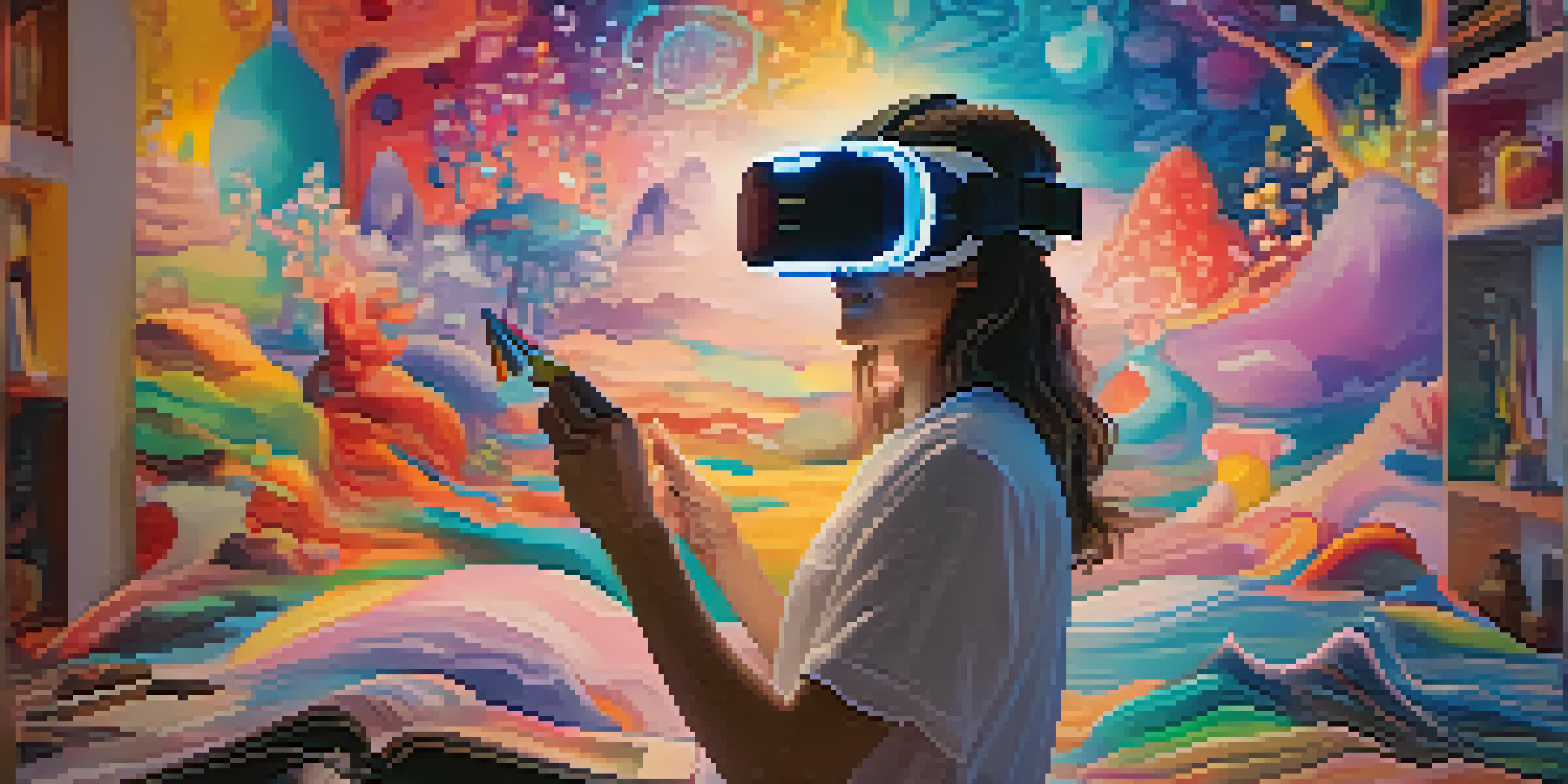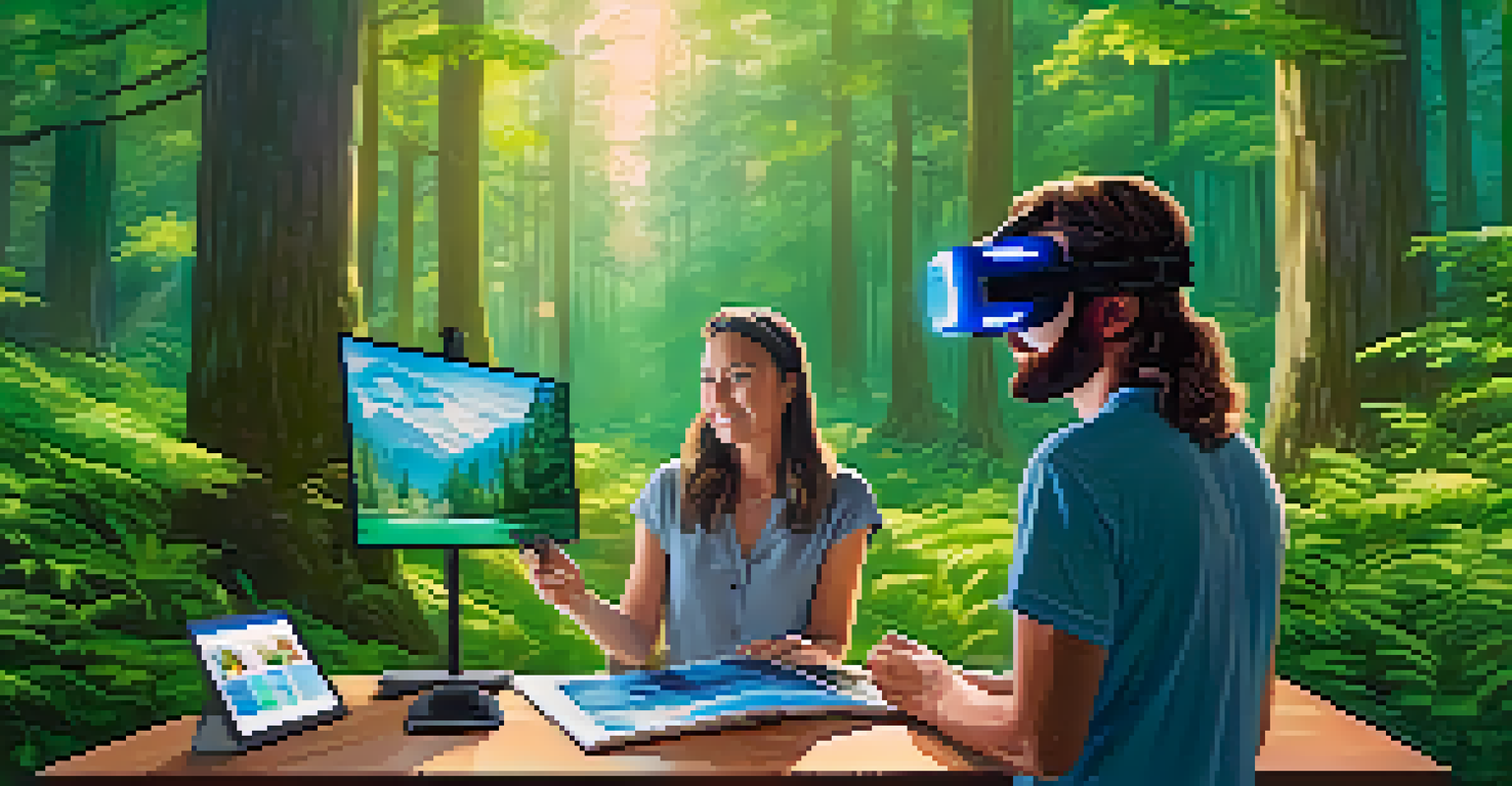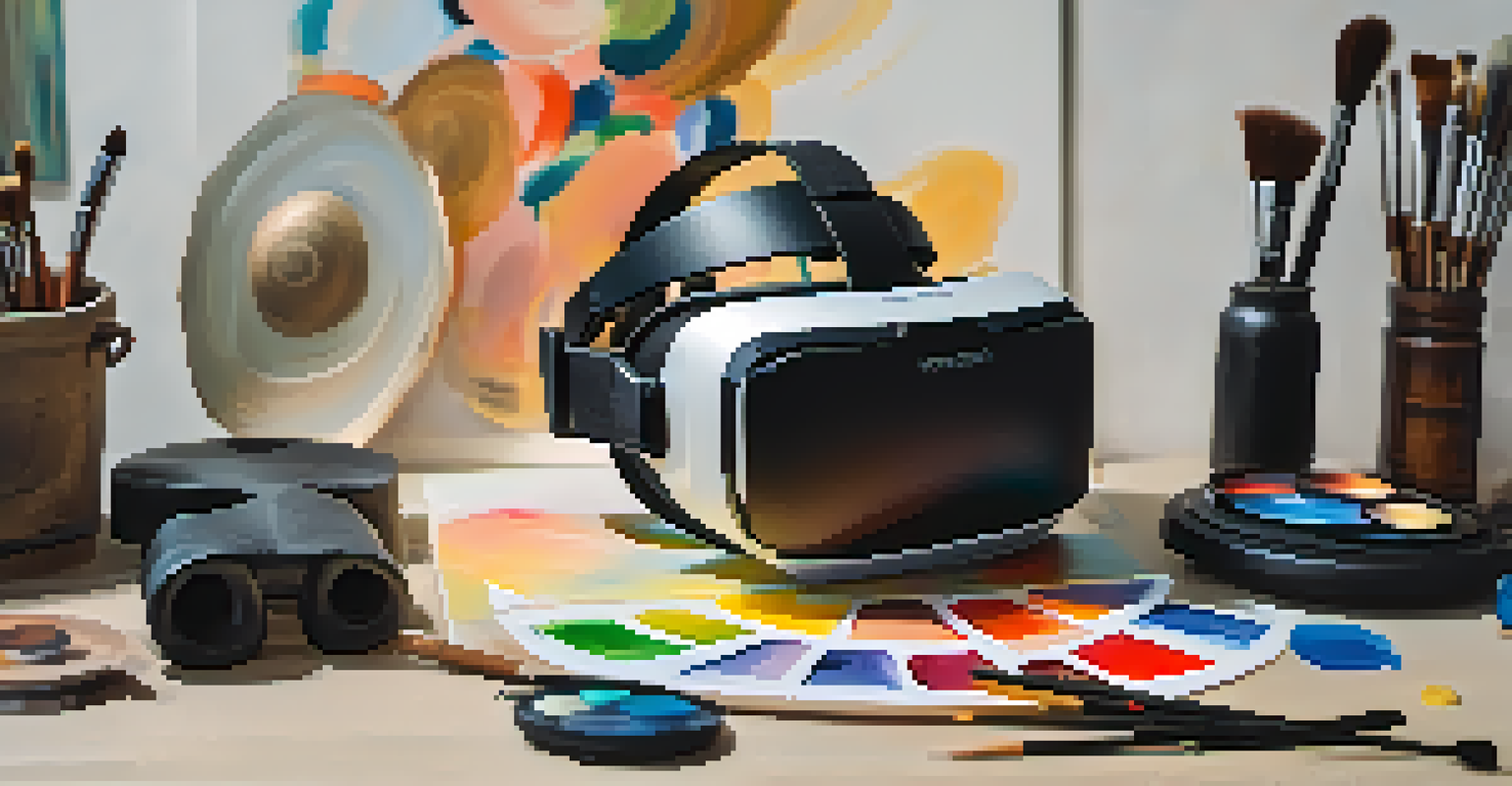Art Therapy and VR: Healing Through Virtual Art Experiences

Understanding Art Therapy: A Creative Healing Approach
Art therapy is a therapeutic practice that uses creative expression to help individuals explore their emotions and experiences. By engaging in artistic activities, participants can communicate feelings that may be difficult to articulate verbally. This form of therapy is particularly beneficial for those dealing with trauma, anxiety, or depression, as it fosters a safe space for exploration and healing.
Art is not what you see, but what you make others see.
The process involves a trained art therapist who guides clients through various artistic mediums, such as painting, drawing, and sculpting. These activities not only encourage self-expression but also help individuals gain insights into their thoughts and behaviors. Ultimately, art therapy aims to improve mental well-being by promoting self-discovery and emotional release.
As we delve deeper into the realms of technology, art therapy has begun to evolve, leading us to an exciting intersection with virtual reality (VR). This innovative approach opens new doors for immersive experiences that can amplify the therapeutic benefits of traditional art therapy.
The Role of Virtual Reality in Art Therapy
Virtual reality technology offers a unique platform for art therapy, enabling individuals to escape their physical surroundings and step into a world of creativity. With VR, clients can engage with digital art tools in a fully immersive environment, enhancing their ability to express themselves freely. This can be especially empowering for those who may feel intimidated by traditional art forms.

One of the most significant advantages of VR in art therapy is its ability to create a safe, controlled environment where individuals can confront their emotions. For example, someone coping with trauma can use VR to create art that reflects their experiences without the pressure of judgment. This anonymity allows for a deeper exploration of feelings that may have been previously suppressed.
Art Therapy Enhances Emotional Healing
Art therapy utilizes creative expression to help individuals explore and communicate their emotions, making it especially beneficial for those experiencing trauma, anxiety, or depression.
Additionally, VR can simulate various settings that inspire creativity, such as serene landscapes or abstract spaces, providing a backdrop that can influence the artistic process. By combining art therapy with the immersive qualities of VR, therapists can foster a deeper connection between the individual and their art.
Benefits of VR Art Therapy for Mental Health
The integration of VR technology into art therapy has shown promising benefits for mental health. First and foremost, it can reduce anxiety and stress levels by providing a calming, immersive experience that encourages relaxation. Individuals can lose themselves in the creative process, allowing for a natural release of tension and frustration.
The greatest weapon against stress is our ability to choose one thought over another.
Moreover, VR art therapy can facilitate better engagement for those who struggle with traditional therapy methods. The interactive nature of virtual experiences can captivate clients' attention, making them more likely to participate actively. This increased engagement can lead to more significant breakthroughs in therapy.
Ultimately, the combination of art therapy and VR not only aids in healing emotional wounds but also fosters a sense of empowerment. Clients often report feeling more in control of their emotions, as they can create and manipulate their artistic expression in a virtual space, leading to a stronger sense of self.
Real-World Applications of VR Art Therapy
Several organizations and therapists are already harnessing the power of VR art therapy in their practices. For instance, some mental health facilities have begun integrating VR tools into their therapeutic programs, allowing clients to explore their emotions through virtual art sessions. These sessions often include guided experiences that help clients navigate their feelings in a supportive environment.
One notable case is the use of VR art therapy for veterans dealing with PTSD. By creating art in a virtual space that simulates their experiences, veterans can process their trauma in a way that feels safe and manageable. This has led to improved emotional regulation and a reduction in symptoms associated with PTSD.
VR Transforms Art Therapy Experience
Virtual reality technology offers an immersive platform that enhances the therapeutic benefits of art therapy, allowing clients to express themselves in a safe and engaging environment.
As more therapists recognize the potential of VR in enhancing traditional methods, we can expect to see an increase in its application across various demographics, making art therapy more accessible and effective for diverse populations.
Challenges and Limitations of VR in Art Therapy
While the integration of VR into art therapy is promising, it is not without its challenges. One primary concern is the accessibility of technology, as not everyone has access to high-quality VR equipment. This limitation can create disparities in who can benefit from these innovative therapeutic experiences.
Additionally, some individuals may experience discomfort or motion sickness when using VR, which can hinder their ability to engage fully in the therapeutic process. Therapists must be prepared to accommodate these reactions and offer alternatives that still promote creative expression.
Lastly, the field of VR art therapy is still relatively new, and ongoing research is needed to evaluate its long-term effectiveness. Therapists and researchers must collaborate to develop best practices and guidelines that ensure VR is used safely and effectively in art therapy settings.
The Future of Art Therapy with Virtual Reality
As technology continues to advance, the future of art therapy with virtual reality looks bright and full of potential. With ongoing developments in VR technology, we can expect to see more sophisticated tools that enhance the creative process. These advancements may include improved graphics, more interactive environments, and even AI-assisted art creation.
Furthermore, as awareness grows about the benefits of both art therapy and VR, we may see an increase in training programs that equip therapists with the skills needed to integrate these tools into their practice. This would ensure that more individuals can access the healing power of art therapy in a virtual setting.
Challenges in Implementing VR Therapy
Despite its potential, VR art therapy faces challenges such as accessibility of technology, discomfort for some users, and the need for ongoing research to establish best practices.
Ultimately, the fusion of art therapy and virtual reality has the potential to transform mental health treatment, making it more engaging and effective. As we continue to explore this innovative approach, we may uncover even more ways to harness creativity for healing.
Getting Started with VR Art Therapy
If you’re interested in exploring VR art therapy, the first step is to find a qualified therapist who specializes in this innovative approach. Many mental health professionals are now incorporating VR into their practice, so it’s essential to do your research and choose someone with experience in both art therapy and VR technology.
Once you’ve connected with a therapist, they will guide you through the process, helping you access the necessary equipment and software. It’s important to communicate openly about your goals and any concerns you may have, as this will ensure a personalized experience that meets your needs.

Finally, embrace the journey of creativity and exploration. VR art therapy can be a transformative experience, allowing you to express emotions, confront challenges, and ultimately heal through the power of art in a virtual world.